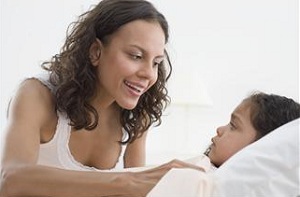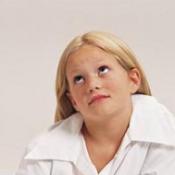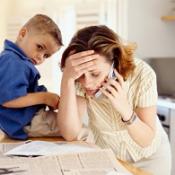 I am frequently asked what the best complementary or alternative therapies for kids are. This is a broad and potentially complex question, with appropriate courses of treatment depending on both on the child’s struggles and the balance of safety and efficacy of the therapy being considered. Eventually, many parents eventually find a complementary or alternative medicine (CAM) therapy that feels right for their child.
I am frequently asked what the best complementary or alternative therapies for kids are. This is a broad and potentially complex question, with appropriate courses of treatment depending on both on the child’s struggles and the balance of safety and efficacy of the therapy being considered. Eventually, many parents eventually find a complementary or alternative medicine (CAM) therapy that feels right for their child.
The most recent data from the National Center for Complementary and Alternative Medicine (NCCAM) found that 12% of the 9,000 children surveyed in 2007 had used some form of CAM during the previous year. CAM use typically ranges from providing remedies in lieu of medical treatments—such as using a homeopathic flu remedy instead of a prescription—to using CAM in conjunction with conventional remedies. The latter can be as simple as giving a child a zinc lozenge or tea with honey in addition to the antibiotics a doctor prescribes when a child has a sore throat or throat infection. Another example is when a child has been diagnosed with attention deficit hyperactivity disorder (ADHD), and his or her parents employ dietary changes even if the child is also receiving medication or psychotherapy. CAM therapies are often used to help children manage symptoms of chronic pain conditions or notable anxiety, ideally in combination with psychotherapy (and appropriate medical care, if this is indicated).
Remembering Developmental Differences
A point NCCAM emphasizes is that children are not merely smaller versions of adults. Similarly, more studies have been conducted regarding the effects of many CAM therapies on adults, although there is a growing body of research on CAM with children. Thus, what may be considered an appropriate CAM therapy or dose of therapy for an adult is not necessarily what we can recommend for a child.
That being said, there are a number of treatments that are considered generally safe for children, particularly when provided or informed by appropriately trained professionals. My favorites are listed here. I chose to emphasize non-oral intake therapies, although at times these may also be appropriate.
- Guided imagery or self-hypnosis can be helpful for managing mood symptoms, pain and itching, sleep difficulties, and nausea.
- Mindfulness or other types of meditation can aid in improving mood, pain, itching, sleep, nausea, and concentration.
- Aromatherapy can help reduce anxiety and enhance feelings of calm, especially when paired with other therapies, including cognitive behavioral therapy, meditation, imagery/hypnosis, or massage.
- Movement therapies, such as yoga, dance therapy, or tai chi can increase a child’s feelings of mastery, discharge excess physical tension, provide focus, and improve mood.
- Massage decreases muscle tension or soreness and increases relaxation.
- Energy therapies, such as Reiki or therapeutic touch, may help increase calmness and decrease stress. These may also help with some physical discomforts.
- Art therapy can help children cope with change, shed light on emotions and concerns that they may have trouble verbalizing, and reinforce healing images created during guided imagery and hypnosis.
- Homeopathy is gently calming and is reported to help with fears, anxiety, and tantrums. There is less data on this therapy, but it is generally considered to be safe.
- Diluted ginger tea can help with upset stomach/nausea.
- Dietary changes, which may include eliminating processed foods, caffeine, or sugar and emphasizing whole grains, fruits, vegetables, legumes, and healthy sources of protein, are health-supportive overall, and some parents report improved mood, sleep, and concentration when processed foods are limited or eliminated.
One common theme that runs through most of the therapies listed above is that they help children to feel calmer. Some of the approaches provide children with tools to help them directly impact how they feel via what they do (movement therapies, imagery/hypnosis, meditation, art), which enhances children’s feelings of mastery and control. All of these approaches require at least initial participation and monitoring from parents—a key ingredient in helping children to feel safe, loved, and supported.
As always, it is essential to keep healthcare providers in the loop when using CAM therapies with children, particularly with those who have a medical or psychological illness.
Modeling Emotional Intelligence
Finally, if I were to add a number 11 to the list, it would be to emphasize that children pick up on and are undoubtedly affected by their parents’ moods. It is essential for parents dealing with anxiety, depression, or other psychological challenges to obtain appropriate treatment. Doing so helps parents feel better, enhances their ability to cope with the many demands of parenting, and teaches children about the value of self-care. Furthermore, emotionally healthy parents tend to parent more effectively, which also reduces children’s feelings of anxiety and depression.
Resources:
- National Center for Complementary and Alternative Medicine: CAM Use and Children
- Columbia University’s Integrative Therapies Program for Children with Cancer: A leading program that emphasizes both research and clinical practice. Their website contains a wealth of information about a variety of therapies, as well as helpful links.
- This article details an integrative (CAM) treatment of pediatric pain and itch (pruritus) with a seven year-old girl:
- Stein, T. R., Sonty, N., and Saroyan, J. M. (2012). “Scratching” beneath the surface: An integrative psychosocial approach to pediatric pruritus and pain. Child Clinical Psychology and Psychiatry, 17(1), 33-47.

The preceding article was solely written by the author named above. Any views and opinions expressed are not necessarily shared by GoodTherapy.org. Questions or concerns about the preceding article can be directed to the author or posted as a comment below.

 Can Complementary and Alternative Treatments Help with ADHD?
Can Complementary and Alternative Treatments Help with ADHD? The Power of Scent: Aromatherapy and Psychotherapy
The Power of Scent: Aromatherapy and Psychotherapy Raising a Child with Special Needs: What About Your Needs?
Raising a Child with Special Needs: What About Your Needs?

